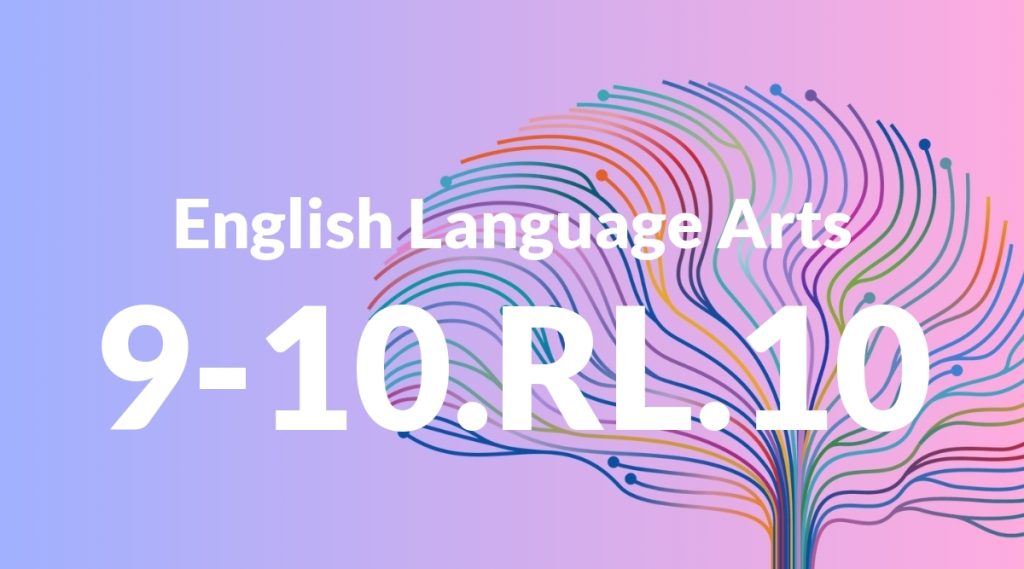Standard: 9-10.RL.10 – By the end of grade 9, read and comprehend literature, including stories, dramas, and poems, in the grades 9-10 text complexity band proficiently, with scaffolding as needed at the high end of the range. By the end of grade 10, read and comprehend literature, including stories, dramas, and poems, at the high end of the grades 9-10 text complexity band independently and proficiently.
Grade level: Grade 9-10
Subject: English Language Arts
Domain: Reading: Literature
Teacher Overview
This standard emphasizes the importance of reading and comprehending a wide range of literature, including stories, dramas, and poems, by the end of grades 9 and 10. Mastery of this standard ensures that students are capable of understanding complex texts independently, which is crucial for their academic and personal growth. Students should already be familiar with basic literary elements and have experience analyzing texts. They should also be comfortable with reading and discussing literature from earlier grades.
Upon mastering this standard, students will be prepared to engage in more advanced literary analysis and explore more complex texts in higher grade levels. They will also be ready for college-level literature courses and advanced placement exams.
Common Misconception 1
A common misconception is that all literature must be read and understood in the same way. This is incorrect because different genres and text complexities require different reading strategies and analytical approaches.
Intervention 1
To remediate this misconception, introduce diverse reading strategies tailored to different genres and text complexities. Use guided reading sessions to demonstrate these strategies.
Common Misconception 2
Another common misconception is that the meaning of a text is always explicit and easy to find. This is incorrect because many texts contain implicit meanings and themes that require careful analysis and inferential thinking.
Intervention 2
To address this misconception, teach students to look for implicit meanings and themes by analyzing textual evidence and practicing inferential thinking through group discussions and written responses.
Prerequisite Knowledge
Students should have a foundational understanding of basic literary elements such as plot, character, setting, and theme. They should also have experience reading and analyzing texts from earlier grades, and be familiar with basic literary analysis techniques.
Subsequent Knowledge
After mastering this standard, students will be able to engage in more advanced literary analysis, including comparative literature studies, and explore more complex texts in higher grade levels. They will also be prepared for college-level literature courses and advanced placement exams.
Instructional Activities
- Conducting literature circles to discuss and analyze texts
- Writing analytical essays on themes and characters
- Creating visual representations of literary elements
- Participating in dramatic readings and performances
- Comparing and contrasting different literary works




